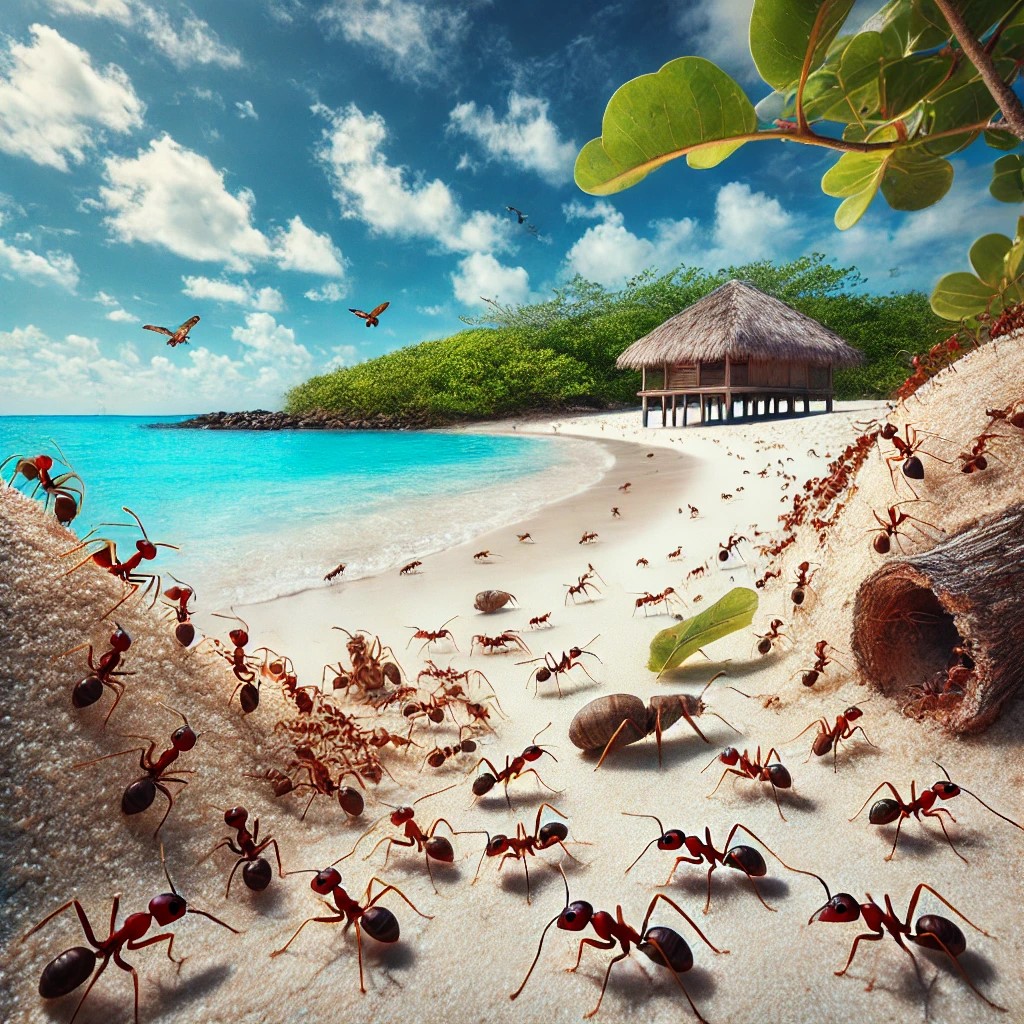
In Aruba, among the less visible inhabitants, but no less important for that, are ants, small insects that play a crucial role in the island’s ecosystem. These tiny creatures have developed fascinating adaptations to survive in the island’s semi-arid climate.
Some of the species that can be found in Aruba are:
Solenopsis invicta (Fire Ant): A Resilient Survivor
Among the ant species found in Aruba, the fire ant (Solenopsis invicta) is one of the most well-known due to its painful sting. This species is incredibly invasive and has managed to establish itself on the island thanks to its ability to adapt to difficult conditions. During the rainy season, these ants intensify their activity, taking advantage of the moisture to expand their colonies. However, during the dry season, they reduce their activity and retreat to their underground nests, where they can survive on limited resources.
Paratrechina longicornis (Crazy Ant): Adaptability in Motion
Another common species in Aruba is the crazy ant (Paratrechina longicornis), named for its erratic behavior. This ant is extremely adaptable and has rapidly spread across the island, forming colonies in a variety of environments, from urban areas to natural spaces. Its ability to move quickly and take advantage of any available food source allows it to survive both in wet and dry seasons.
Camponotus sp. (Carpenter Ant): Nature’s Architects
Carpenter ants (Camponotus sp.) are other notable residents of Aruba. Known for their ability to build nests in wood, these ants take advantage of the rains to expand their colonies, using the moisture to strengthen their structures. During the dry season, their activity decreases, but they remain an important component of the ecosystem, helping to decompose dead wood and recycle it back into the environment.
Pheidole megacephala (Big-Headed Ant): Little Warriors
The big-headed ant (Pheidole megacephala) is another invasive species that has adapted well to Aruba’s climate. Characterized by its soldiers with disproportionately large heads, this ant is highly competitive and can displace other ant species in its quest for resources. During the rainy season, its activity increases, and colonies expand, while in the dry season, the ants become more aggressive in defending their limited resources.
Monomorium pharaonis (Pharaoh Ant): A Persistent Pest
The pharaoh ant (Monomorium pharaonis), also known as the sugar ant, is a common pest in urban areas of Aruba. These small ants are particularly problematic due to their ability to invade homes and other structures in search of sugary foods. They form large, persistent colonies that are difficult to eradicate, especially in warm climates where they are active year-round.
Atta sp. (Leaf-Cutter Ant): Ecosystem Engineers
Finally, leaf-cutter ants (Atta sp.) are a fascinating example of how a species can significantly alter its environment. Although not as common in Aruba as in other parts of the Caribbean, these ants play a crucial role in nutrient recycling. During the rainy season, they collect plant material to cultivate fungi, which is their main food source. In the dry season, they reduce their activity but continue to tend to their underground gardens.
Ants are fascinating insects that are constantly adapting to changes in their environment. This is why we must always remember that when faced with an infestation, they can be difficult to control. If you have problems with these incredible insects, do not hesitate to contact us so that we can help resolve the situation.
